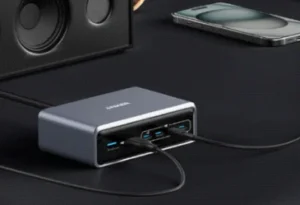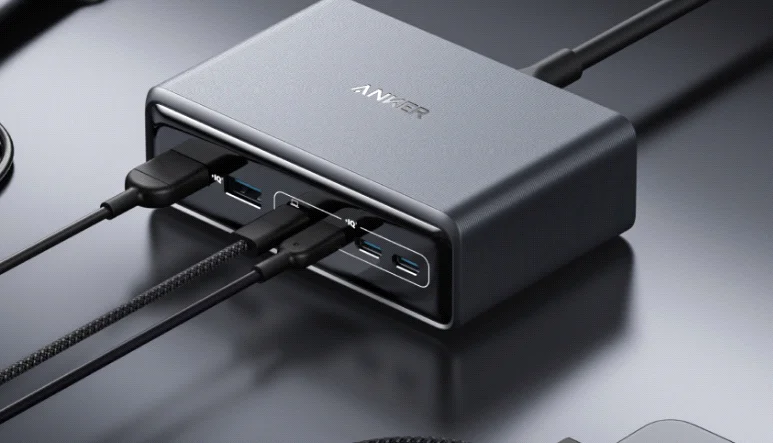A laptop charger is crucial for keeping your device powered and functional. When it stops working unexpectedly, it can disrupt your productivity and lead to frustration. Understanding what to do next can help you diagnose the issue and find a solution quickly. This article outlines essential troubleshooting steps, preventive measures, and replacement options to get your laptop back up and running efficiently.
Steps If Your Laptop Charger Stops Working
Step 1: Basic Troubleshooting
When your laptop charger ceases to function, start with basic troubleshooting. Sometimes the issue might be simpler than you think. Begin by inspecting both the charger and the connection points. Look for any visible damage, such as frayed wires, bent connectors, or signs of burns. If you notice any damage, it’s likely time for a replacement.
Next, check the power outlet. Sometimes the issue may be with the outlet itself rather than the charger. Try plugging another device into the same outlet to see if it works. If it does, the outlet is fine, and you should focus on the charger or laptop. Ensure that the charger is securely connected to both the laptop and the power source. A loose connection might be preventing your laptop from receiving power.
Lastly, if you have access to another compatible charger, try using it. This will help determine whether the problem lies with the charger or the laptop itself. If your laptop begins to charge, the issue is likely with the original macbook charger.
Step 2: Restart Your Laptop
Sometimes, the problem isn’t with the charger at all, but rather a software issue preventing the laptop from recognizing the charger. A simple restart may resolve this. Shut down your laptop completely and wait a few moments before turning it back on. When the system reboots, check to see if it recognizes the charger.
If it does, you can continue using it as normal. If not, further investigation may be necessary. In some cases, a temporary glitch might prevent the charging function, and a reboot can clear that up. However, if the charger still isn’t working after a restart, continue to troubleshoot.
Step 3: Check Battery Health
Another important step is to assess your laptop’s battery health. A faulty battery can sometimes masquerade as a charger problem. On Windows laptops, you can check battery health through the settings by navigating to “Settings” > “System” > “About” > “Battery usage by app.” This will give you insights into battery performance.
For Mac users, click on the Apple menu, select “About This Mac,” then “System Report.” Under “Power,” you can review battery statistics. If your battery health status indicates “Service Recommended” or anything similar, you may need to consider replacing the battery. A degraded battery can significantly affect charging capability, even if the charger itself is functioning normally.
Step 4: Update Drivers and Settings
Outdated drivers or incorrect settings can sometimes lead to charging issues. Keeping your laptop’s software and drivers updated is crucial for optimal performance.
For Windows users, you can update power management drivers by going to “Device Manager.” Under “Batteries,” right-click on “Microsoft ACPI-Compliant Control Method Battery” and select “Update driver.” This can often resolve issues related to charging.
Mac users should ensure that their operating system is up to date by checking “System Preferences” and looking for software updates. Keeping your laptop updated helps eliminate software conflicts that may prevent charging.
Step 5: Seek Professional Help
If you’ve tried all the troubleshooting steps and your laptop charger still isn’t working, it may be time to seek professional assistance. Take your laptop to an authorized service center or a trusted technician. They can perform a more thorough diagnosis and check for internal issues that might be affecting charging.
A qualified technician has the tools and expertise to identify problems that may not be visible to the average user. They can determine whether the issue lies with the charger, the laptop, or even the battery. Getting professional help can save you time and prevent further damage.
Step 6: Replacement Options
If your charger is confirmed to be faulty, you’ll need to consider replacement options. You can choose from OEM (Original Equipment Manufacturer) chargers, which are made by the same company as your laptop, or third-party chargers from reliable brands.
OEM chargers are generally more expensive but ensure compatibility and reliability. Third-party chargers can be more affordable but may vary in quality. Ensure that any charger you choose meets the necessary voltage and amperage specifications for your laptop to avoid potential damage.

Conclusion
A malfunctioning laptop charger can be a significant inconvenience, but knowing how to address the issue can save you time and frustration. Start with basic troubleshooting, check the battery health, and update your drivers. If these steps don’t resolve the problem, seeking professional help is a wise choice. Ultimately, understanding your options for replacement can ensure that your laptop remains functional and ready for your needs. With the right approach, you can get back to work or leisure activities without prolonged interruptions.



